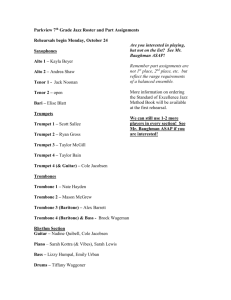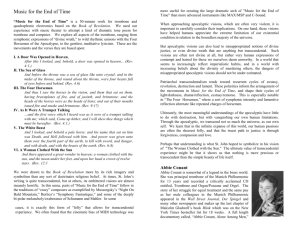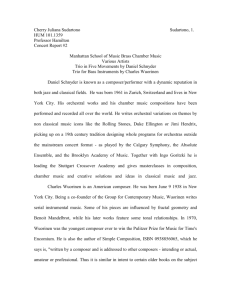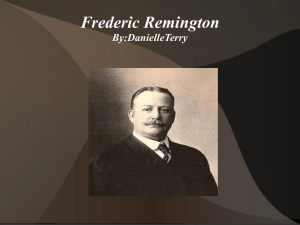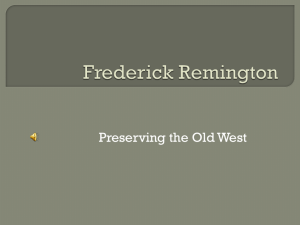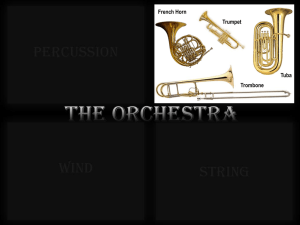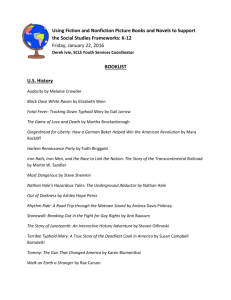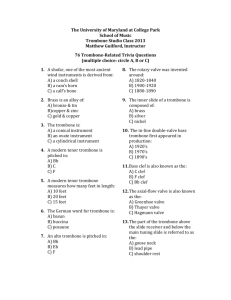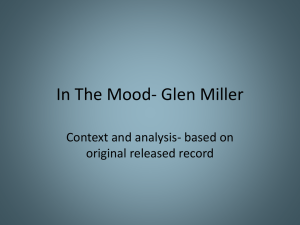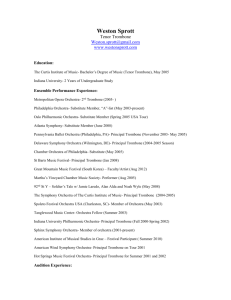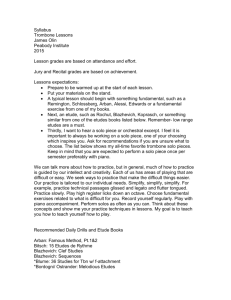File - I didn`t turn on the music so I could dance
advertisement
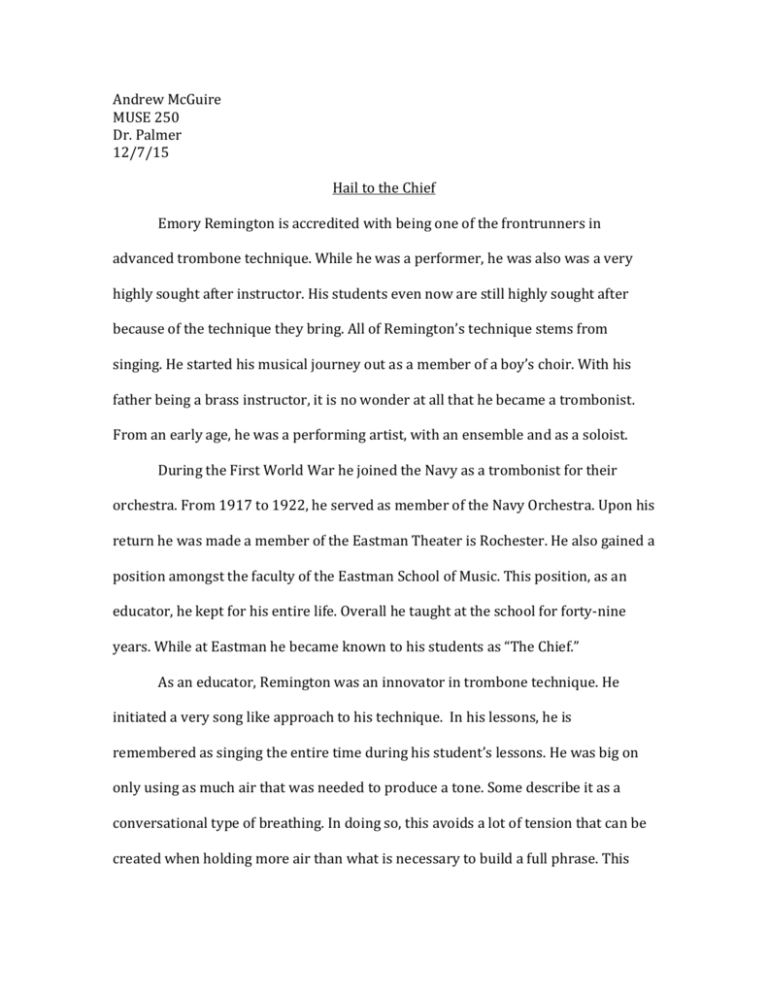
Andrew McGuire MUSE 250 Dr. Palmer 12/7/15 Hail to the Chief Emory Remington is accredited with being one of the frontrunners in advanced trombone technique. While he was a performer, he was also was a very highly sought after instructor. His students even now are still highly sought after because of the technique they bring. All of Remington’s technique stems from singing. He started his musical journey out as a member of a boy’s choir. With his father being a brass instructor, it is no wonder at all that he became a trombonist. From an early age, he was a performing artist, with an ensemble and as a soloist. During the First World War he joined the Navy as a trombonist for their orchestra. From 1917 to 1922, he served as member of the Navy Orchestra. Upon his return he was made a member of the Eastman Theater is Rochester. He also gained a position amongst the faculty of the Eastman School of Music. This position, as an educator, he kept for his entire life. Overall he taught at the school for forty-nine years. While at Eastman he became known to his students as “The Chief.” As an educator, Remington was an innovator in trombone technique. He initiated a very song like approach to his technique. In his lessons, he is remembered as singing the entire time during his student’s lessons. He was big on only using as much air that was needed to produce a tone. Some describe it as a conversational type of breathing. In doing so, this avoids a lot of tension that can be created when holding more air than what is necessary to build a full phrase. This happens when we feel a sense of building or blocking air in the lungs. The air then becomes stales, and we limit the actual amount of air we can take in. As well as being an innovator of technique, The Chief was also a big proponent of Ensemble music being written for trombone. While at Eastman, he is credited with being the founder of the Eastman Trombone Choir. In this role, he actively sought out music that could be rewritten for trombone choir. He was also a big advocate for students seeking out music and rewriting music themselves. He is remembered as being a avid fan of J.S. Bach. Bach wrote a large portion of music that the Chief ending up using as ensemble music for his trombone choir. This music comes the form of some of Bach’s Chorales as well as other written works. Having such an influence on the world of trombone, he was sought after by C.G. Conn to help develop a trombone. The trombone they came up with was the 88H. Even to this day, this trombone is extremely popular amongst players because of the tone it produces and the range of dynamics one can achieve while playing the instrument. He also helped in developing what is known as the Remington mouthpiece. Remington advocated for his students to use this mouthpiece as the students began their studies with him in their first years at Eastman. This mouthpiece gave his students a nice sound with minimal effort on their part. This allowed for an ease in playing. It also created a oneness is sound amongst the Trombone Choir as well as different orchestras the studio mates may be in together. The Chief has left a legacy not quite like any other. He was an advocate for beautiful playing, and song like tone production. This gives trombonists the largest access to their technique they can achieve. Through the concept of the trombone choir and his arrangement of different pieces he will likely be remembered as a reputable performer as well. His legacy is so great that even after his student’s students are gone people will still remember him. Eight years after his death the Eastman School of Music renamed one of their rehearsal spaces after his legacy. Room 902 is now known as the Emory B. Remington Rehearsal Room. Bibliography "Emory Remington." Eastman School of Music. 2015. http://www.esm.rochester.edu/about/portraits/remington/. "Emory Remington." Emory Remington. March 14, 2015. http://www.windsongpress.com/brass players/trombone/remington.htm. Everett, Micah. "Rediscovering and Reapplying the." The Reforming Trombonist. June 19, 2015. Accessed December 9, 2015. https://thereformingtrombonist.wordpress.com/2015/06/19/rediscoverin g-and-reapplying-the-conversational-breath/. Laanen, Renee. "EMORY B. REMINGTON." Trombone Page of the World. 2015. http://www.trombone-usa.com/remington_emory_bio.htm. Zacharella, Alexandra. Slip Sliding Away: Decoding the Mystery of Trombone Legato. Mid West Clinic – Chicago. December 14, 2011. Conference Handout.
